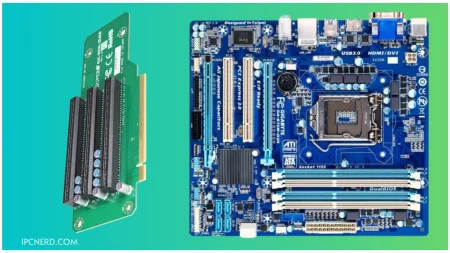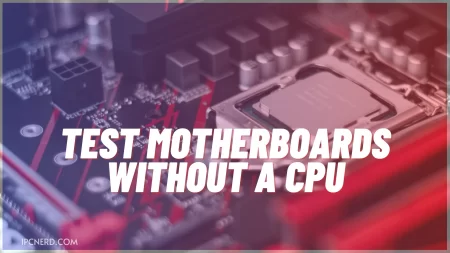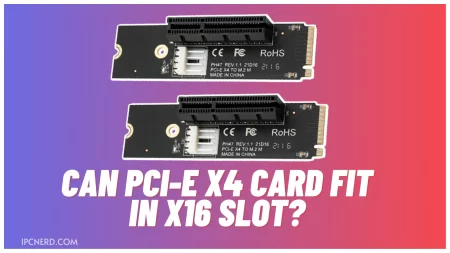If you are planning to purchase a new computer with a discrete graphics card and you’re wondering which PCI-E slot is the best for your GPU, this article explains the best PCIe slots for GPU!
Why are PCIe slots important?

When it comes to a desktop PC, one of the most important things to consider is the graphics card. And to get the best possible performance out of a graphics card, it is important to have a good PCIe slot.
There are a few things that make a good PCIe slot. First of all, it should be able to provide enough bandwidth for the graphics card. Many high-end graphics cards require a lot of bandwidth to function properly.
Another important thing to look for in a PCIe slot is compatibility with the motherboard. Some motherboards are not compatible with certain types of graphics cards. So it is important to ensure that the motherboard and the graphics card are compatible before buying them.
Finally, another thing to consider when choosing a PCIe slot is the size of the slot. Some motherboards have multiple PCI slots, but they may not all be the same size. It is important to ensure that the graphics card will fit into the PCI slot before buying it.
What are the benefits of PCIe slots?
PCIe slots offer several advantages over other types of expansion slots. They are designed to provide higher bandwidth than other slot types, which allows them to support faster data transfer rates. They also allow for lower latency and reduced power consumption.
In addition, PCIe slots can be configured to support multiple video cards, which can benefit gamers or other users who need high-performance graphics. Finally, PCIe slots are backward compatible with older versions of the PCI standard, which means they can be used in many computers.
How to find out which PCIe slot is best for your GPU?
The ideal PCIe slot for your GPU is usually the one that is physically the closest to the CPU. This is because the PCIe bus is a point-to-point connection, meaning that each lane connects directly from the CPU to the GPU. The further away the GPU is from the CPU, the more potential for bottlenecking.
If you’re unsure which PCIe slot is closest to your CPU, you can usually find this information in your motherboard’s manual. Alternatively, you can look up your motherboard’s model number online and check its specifications. Once you know which slot is closest to the CPU, that’s usually the one you want to use for your GPU.
Which PCI-E slot should I use for my GPU?
When installing a graphics card, one of the most common questions is, “which PCIe slot should I use for my GPU?”.
There is no simple answer to this question as it depends on a few factors, such as what type of motherboard you have and what other components you have installed in your computer. However, we can give you a few tips to help you choose the right PCIe slot for your graphics card.
If you have a standard ATX motherboard, you first need to identify which slot is the primary PCIe slot. This is usually the slot that is closest to the CPU socket. The primary PCIe slot is typically where you would install your graphics card, as it offers the best performance.
However, if you have a high-end graphics card that requires extra power, you may need to install it in the secondary PCIe slot, which is usually located next to the primary PCIe slot.
If you’re unsure, which PCIe slot to use for your graphics card, consult your motherboard’s manual or contact its manufacturer for more information.
How to Pick the Best PCIe Slot for Your GPU
When picking the best PCIe slot for your GPU, you need to consider multiple things. The first is the generation of PCIe the slot. Currently, there are three generations of PCIe slots with different speeds.
Generation 1 has a data rate of 2.5 Gbit/s, about 300 MB/s. Generation 2 doubles that data rate to 5 Gbit/s, which is about 600 MB/s. And finally, Generation 3 doubles Gen 2’s data rate again to 10 Gbit/s or about 1200 MB/s.
Next, you need to look at the number of lanes the PCIe slot has. The most common slots you’ll find on a motherboard are x16 and x8 slots. An x16 slot has 16 lanes, while an x8 only has eight. However, this doesn’t mean that an x8 slot will half your GPU’s performance.
If you install an x16 graphics card into an x8 slot, your graphics card will be bottlenecked by the narrower bus width. So it’s important to ensure you get a graphics card that matches the PCIe slot width or is wider so as not to bottleneck your card’s performance.
The power connection is the last thing you must consider when picking a PCIe slot for your GPU. Many graphics cards require a second power connection from a four or 8-pin connector on your power supply.
If you don’t connect this, the card will not get enough power and crash or cause other problems. Most of the time, this secondary power connector is marked with red on the motherboard to indicate that it needs to be attached for the proper function of your graphics card.
That’s about it for picking out the best PCIe slot for your GPU. If you have any questions or comments, please leave them below, and we’ll answer them ASAP.
Conclusion
There is no perfect answer to the question of which PCIe slot is ideal for your GPU, as it depends on various factors, such as the specific GPU you’re using and the other components in your system. However, we hope our tips have helped you figure out which slot is best for your particular setup. If you have any further questions, feel free to leave them in the comments below, and we’ll do our best to help you.
FAQs
How many PCIe lanes does my motherboard have?
The number of PCIe lanes on a motherboard varies depending on the model and manufacturer. You can typically find this information in the product specs or by contacting the manufacturer directly.
Can I use more than one graphics card with my motherboard?
Depending on the number of PCIe slots and available lanes, you may be able to use multiple graphics cards with your motherboard. However, this will likely decrease performance as each card will have to share bandwidth.







